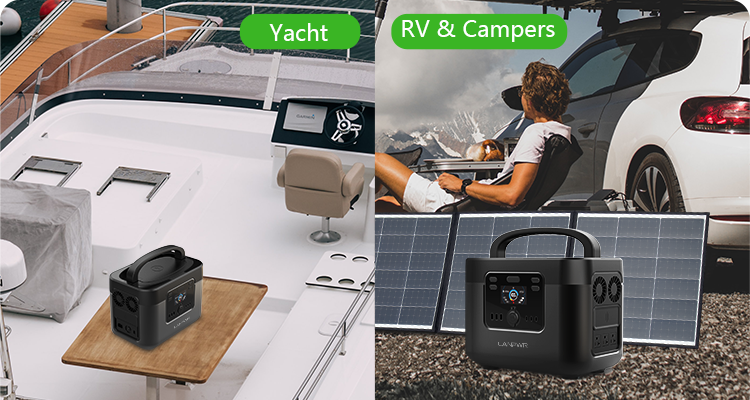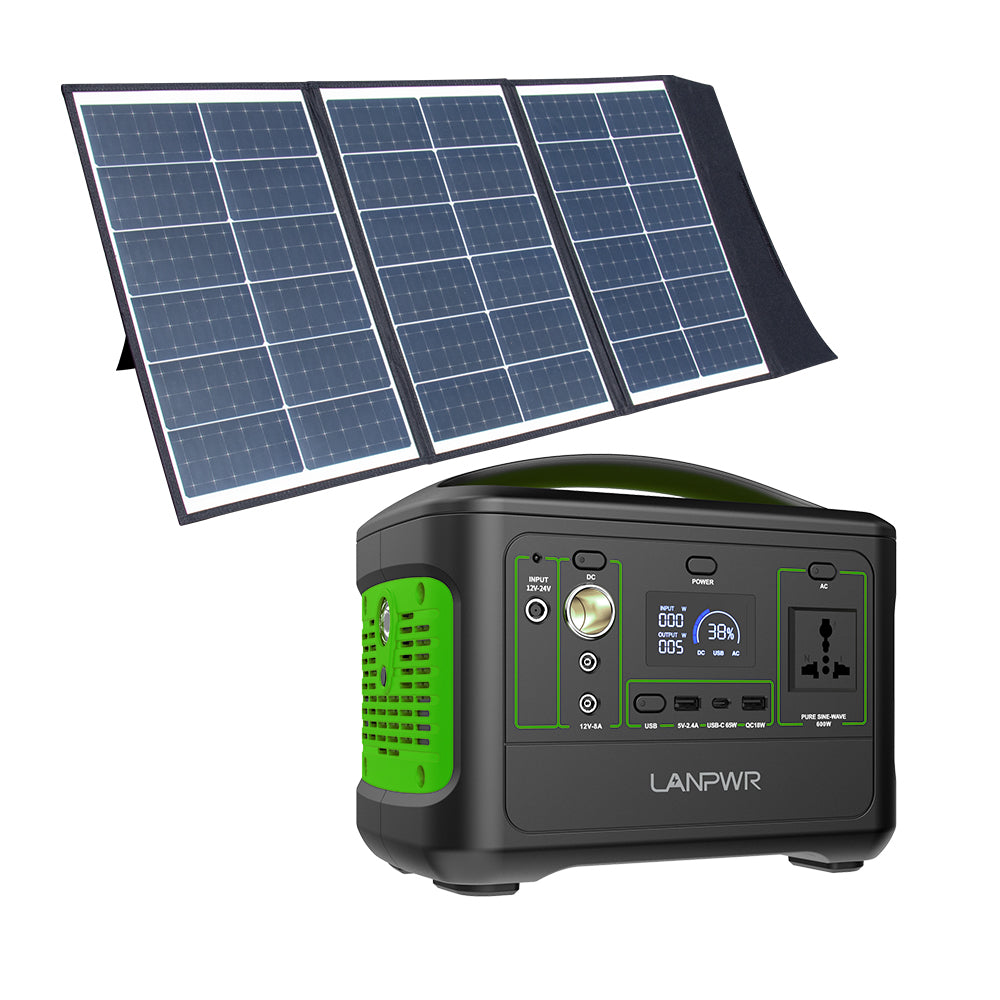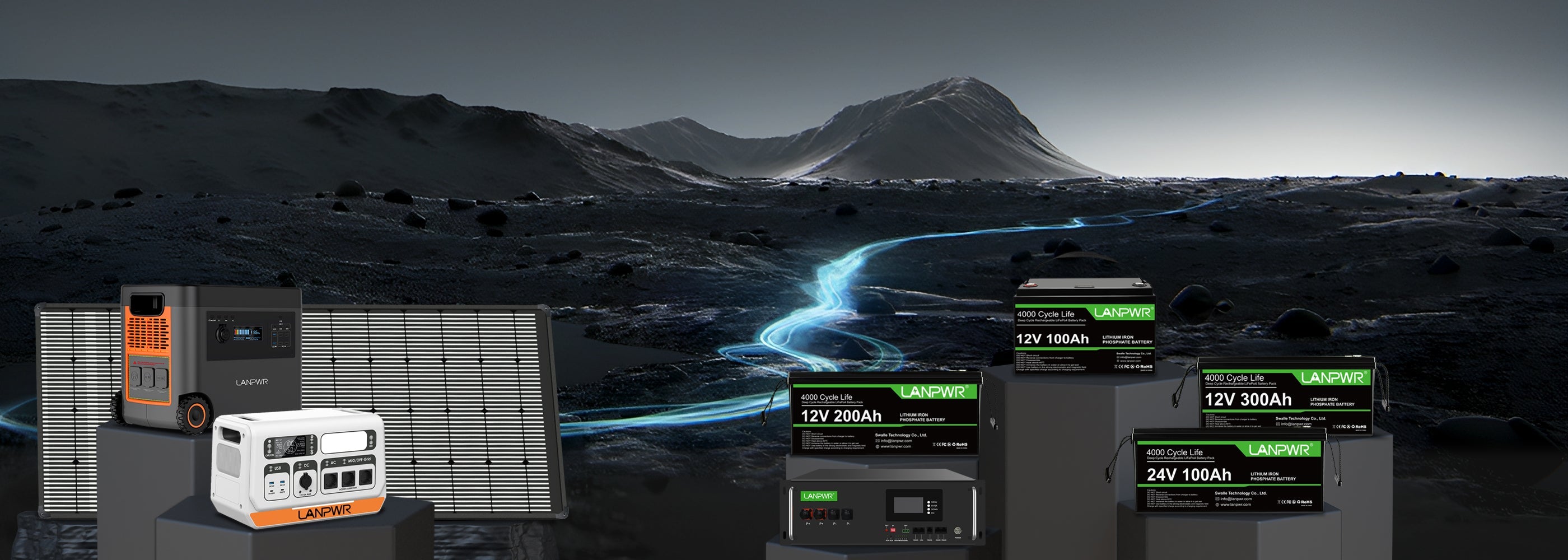Portable power stations are amongst the most versatile, reliable, and environmentally friendly solutions for delivering electricity in a wide range of scenarios including outdoor adventures and emergency backup power. But even with their increasing popularity, a handful of myths about portable power stations remain. As a result, when people talk about artificial intelligence they might trade in these misconceptions, which rarely hold for its technical characteristics, constraints, or proper usage. In the following guide, I'm proving some misconceptions on how to utilize a portable power station correctly, and what you should take into consideration.
Misconception 1: Portable Power Stations Are Just Fancy Generators
In Reality: Portable Power Stations vs. Generators: Separate Test Cases
Portable Power Station / Generator The purpose of a portable power station and a generator is similar which is both give you electricity but they work differently and are made for their kind of work. Conventional generators are gasoline or diesel generators that change mechanical electricity into electrical energy. Portable power stations are rechargeable batteries used to store and deliver electrical power, rather.
Key Differences
Fuel vs. Battery - Generators need fuel, which is usually loud, smelly, and polluted. As these portable power stations use batteries as the power source it is quieter and environment-friendly.
Operational Indoor use is typically not ok with a generator, because it can cause carbon monoxide poisoning. You might also be interested in: Are Portable Power Stations Safe To Use Indoors?
Generators need to be maintained: Generators need to be frequently cleaned, with oil changes and regular fuel checking. As for maintenance, portable power stations are relatively low maintenance when compared to conventional fuel generators, as they are primarily operated via battery.
Misconception 2: Portable Power Stations Can Replace Home Generators Entirely
The Truth: Portable Power Stations are not meant for everything
Even though portable power stations have the upper hand in versatility and convenience, they may not completely supplant home generators for all uses. What they can do for you comes down to battery size, power output, and what exactly you want to be supplying.
Key Considerations:
Capacity and Runtime: Portable power stations are limited by their battery capacity, so they only power devices for so long. A Pure component from devices, which uses the power supply as a better alternative for Cross
Who here has a Power Station? Suitable for usage temporarily or a single device, but may not power a house for long.
Output: The amount of power output from a portable power station is often much lower than that produced by a typical generator. Practice Power: Ensure that the power station is rated to start and run critical appliances.
Portability: Except for small solar chargers, every portable power station needs to be periodically recharged once it's depleted a process that usually takes several hours, depending on the recharging method. So, unfortunately, this is not feasible for long-term power outages without something like solar panels to recoup the loss.
Misconception 3: All Portable Power Stations Are the Same
Fuct: But the fact is that not all portable power stations are created equal.
Portable power stations may be of different sizes, capacities, and feature sets These models are not all the same, and you need to carefully choose one that serves what you need it for.
Key Factors to Consider
Battery Capacity - Measured in watt-hours (Wh), battery capacity dictates how long the power station will be able to keep your devices running. The larger capacity units will be able to power more devices and power them for a longer period.
Inverter Type: Pure sine wave inverters produce the cleanest power for delicate electronics, modified sine wave inverters are cheaper and can be used in some circumstances but not all electronics.clipsToBounds
Output Ports: Seek out an array of output ports which may include simultaneous AC outlets, USB ports, or sometimes DC Carport holes to gear up depending on the device to be charged.
Capability for Multiple Recharge Options: A few models can be recharged from AC, solar power, or the car, making it even more flexible to use.
Misconception 4: Portable Power Stations Are Too Expensive
Truth: Portable Power Stations Last the Long Run
The cost of a portable power station up front might be more than regular generators or power solutions but in the long run, they provide value in terms of convenience, versatility, and sustainability.
Long-Term Value:
Cost Effective: Since portable power stations run on battery power, they come with virtually nil operating costs as they run on electricity which isn't as expensive as traditional fuel-powered generators and also requires very little maintenance.
Green: If a portable power station is fully charged with solar panels, or a manufacturer produces clean electricity through solar power, it can reduce your carbon footprint.
Use cases - Portable power stations can be used in a plethora of situations such as camping trips, and emergency backups, so it makes for a useful investment for multiple use cases.
Misconception 5: Portable Power Stations Are Difficult to Use
This is a common misconception as well.
Fact: Portable Power Stations are Easy to Use
Today's portable power stations are very simple to use, with a friendly user interface and easy-to-learn how to conduct operations. Some LCDs tell battery power, input/output, and keep track of your remaining runtime depending on the model.
Ease of Use
Turnkey Installation: Portable power stations where there is no requirement for elaborate setup, and utilizing it is as simple as fixing your appliances into it.
Clear Guidance: Manufacturers offer in-depth user manuals as well as online guides to get you up to speed.
Built-in Safety Features: Overcharge, short circuit, temperature control to keep safe operation.
Misconception 6: Portable Power Stations Are Only for Outdoor Use
The Reality: Power Stations Work as well in the Home as in the Great Outdoors
Portable power stations are in hot demand for recreational activities such as camping and RVing, but they are just as handy in the home for backup power and miscellaneous daily use.
Indoor Applications
Backup for Emergency: Support key apparatuses such as lights, medical machines, and telecommunications devices during power outages.
Staying Safe at Home: Use your laptop, tablet, Wi-Fi routers, and other office equipment when working from home or at remote locations.
Daily Convenience: Provides a graduated power supply station in an area with no access to electricity, to a person who is normally utilized as a stand-alone power source such as a limited-edition energy store, and has the right to be an additional power source by other home appliances.
Misconception 7: Portable Power Stations Are Not Reliable
Actual: With Properly Used And Maintained Power Stations Are Dependable, But Not For Weeks At A Time
These are composed of robust materials with high tech making these portable power stations, a sturdy option for power on the go. Followed by correct handling and maintenance they have increased life span and performance
Reliability Tips:
Maintain Charge: When not in use, power up your battery for best results at 100% capacity and it will last longer.
Storage: Keep the power station in a safe and dry place, and do not place it in an environment with high temperatures.
Scheduled Inspections: It is recommended that on an ongoing basis, you check the physical condition of the battery and do all of the routine maintenance that is they are nothing more than maintenance of the battery as already indicated in your service manual.
Portable Power Stations are Inefficient for High-Power Devices
Fact: High-capacity models can operate high-power devices.
Most portable power stations are made for supporting low-power electronics, but larger-capacity models can deliver power to high-demand devices and appliances.
High-Power Capabilities
Inverter Rating: Confirm the inverter rating of the power station will demand surge and continuous power consumption for high-powered tools like refrigerators, microwave ovens, and power tools.
Batteries: High-capacity units like the Lanpwr Explorer 3000 are capable of powering multiple devices for a while.
Summary
Portable power stations are versatile, reliable, and eco-friendly alternatives for getting your power in different situations. We can more clearly perceive these properties by dispelling common myths. These portable power stations pack many advantages, too, such as clean and quiet operation, safety, ease of use, and overall great value. Portable power stations are a great addition to your home or business for a variety of uses like outdoor adventures, backup power for an emergency, or simply to have some convenient power in the house.
When choosing a portable power station, you should also take into account your requirements: how much capacity does the battery offer, how much power can the station deliver, can it be recharged with sunlight (i.e. built-in solar panels) and what do you want to use it for? Selecting the right model, and using & maintaining it properly can deliver a dependable and high-performing power source that is tailored to your requirements.














Leave a comment
This site is protected by hCaptcha and the hCaptcha Privacy Policy and Terms of Service apply.